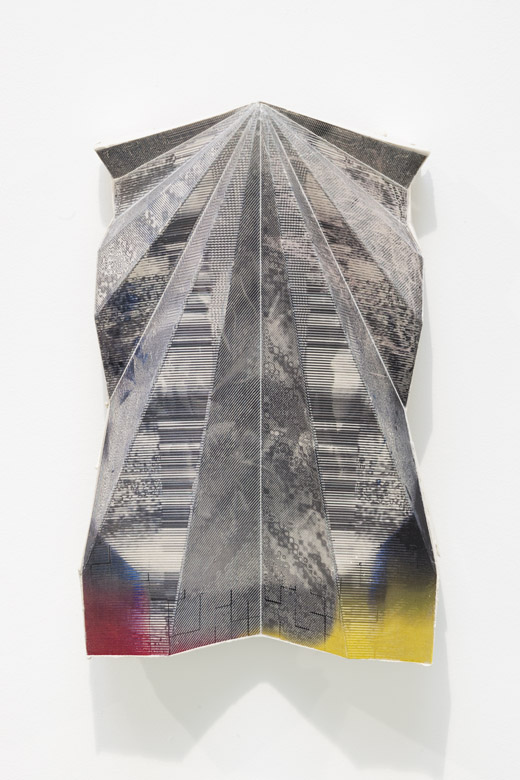I am happy to be part of this upcoming exhibition BOUNDARIES – Curated by Becky Campbell.
Curator and artist Becky Campbell and the newly established cultural spaces Artscape Athens and Snehta Residency invite you to the opening of the exhibition, Boundaries.
We are continually crossing and encountering boundaries in our daily lives, sometimes aware and sometimes oblivious. We cross over districts of a city; through doors; we shift between being awake (vertical) and asleep (horizontal); between hungry and full.
Boundaries presents the works of 32 creators: 28 artists, two writers, an actor and a musician. The two spaces (Artscape Athens and Snehta) are filled with videos, photographs, paintings, drawings, collages, sculptures, structures and installations as well as performances and interventions in the five-minutes’ walk between.
Each work explores a particular angle related to boundaries – the uncanny, the shadow, liminality, non-spaces, being segregated from a home country, the impossibility of fully comprehending the thoughts of another being, political change, geographical shifts and many others. By bringing such a variety of approaches and mediums into dialogue within and across the two hosting locations similarities and connections of these encounters become prevalent.
21-30 March 2014 Opening 20 March 8-10 pm
Artscape Athens | Moschonision 5, Plateia Amerikis, Athens 112 52
Snehta | Aghias Zonis 1, Kypseli, Athens 113 61
Monday-Friday 5-9 pm
Saturday | Sunday: 12-9 pm
Curated by Becky Campbell
Participants:
Alexandros Laios | Andrew Mason | Christos Vagiatas | Christos Papamichael | Despina Flessa | Despoina Sevasti | Dickie Webb | Dimitris Papoutsakis | Dimitris Patsaros | Elliott Burns | Elli Paxinou | Foteini Palpana | Giannis Amanatidis | Giannis Cheimonakis | Giannis Sinioroglou | Irini Bachlitzanaki | Ivan Masteropoulos | Jack Burton | Konstantinos Kotsis | Kosmas Nikolaou | Kostas Tzimoulis | Maro Fasouli | Matina Charalambi | Panos Mattheou | Panos Profitis | Pantelis Yiannakis | Rachael Cloughton | Rilène Markopoulou | Stephanie Mann | Vasilis Gerodimos | Vassilis Noulas | Zoe Hatziyannaki
The exhibition is being hosted by Artscape Athens and Snehta Residency:
Artscape Athens – An Open Cultural Landscape. Artscape Athens is located at Moschonision 5 Street, in between the borders of Kypseli and Amerikis Square. Since the beginning of 2014 it constitutes the space for cultural expression and artistic creation of the non-profit organisation, Hellenic Museum of Fairytales. Artscape Athens aims to support every act of artistic making and promote local creative ideas. The participatory aspect of its actions constitutes an ongoing motive; therefore it is open in receiving applications for projects and exhibitions from those interested in introducing their work to the broader public.
Snehta Residency is a small private organization that was formed in 2012 in Athens with the purpose to bring international artists in contact with the Athenian art scene. The artists are selected to live and work in Athens for two months in the Kypseli apartment. Snehta – (Athens in reverse) is a metaphorical name suggesting a deeper reading of the city. Snehta aims to expand artistic activity and research in the City, whilst supporting practices focusing on contemporary issues through an experimental and ingenuous approach. Snehta fosters new relationships and collaborations internally and beyond the confines of Athens, Greece.
Becky Campbell is a Scottish artist and curator living in Athens. Previously she has worked for The Fruitmarket Gallery in Edinburgh and DESTE Foundation in Athens. She is part of the team running Snehta Residency in Kypseli, Athens, as well as an organiser of independent projects. Curated projects includeVirtual Materiality for ekthesis-online.com, a at The Demarco Archive, Edinburgh and The WOT Gallery, Edinburgh. She has exhibited internationally in exhibitions including: Gaesahud, Konseptheimilid Sigmar, Reykjavik, Iceland; YELLOW, 2025 Kunst und Kultur e.V., Hamburg, Germany; Short-lived Settlements, Snehta, Athens; Come Ye Hither, Crofter’s Lodge, Loch Eport, North Uist, Scotland; three thousand seven hundred and two, JDM Foundation, Chicago, Illinois, USA.
For further information contact: Becky Campbell & Snehta Residency: becky@snehtaresidency.org Artscape Athens: info@artscapeathens.gr | τηλ. 211 1829117







